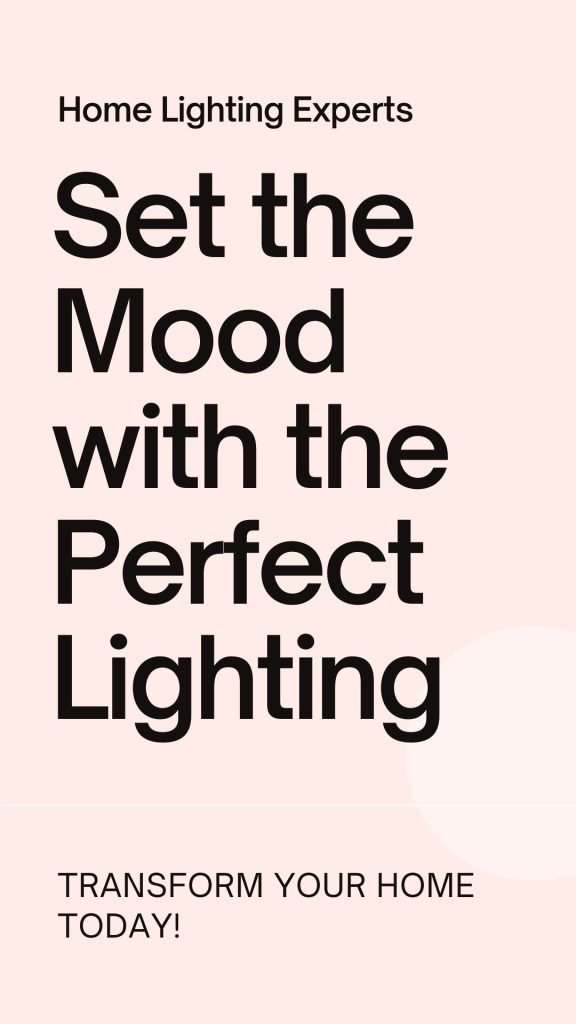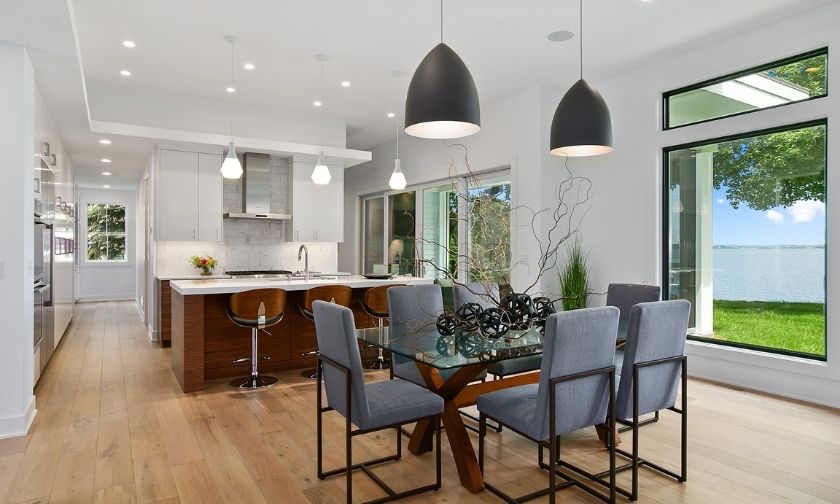Creating the perfect ambiance in your home goes far beyond choosing stylish furniture and decorative elements. Lighting, often overlooked, plays a key role in shaping the atmosphere and mood of a space. A well-lit room can evoke warmth, relaxation, cheerfulness, or inspiration.
This guide will explore the different types of lighting, their impact on mood, and how to effectively use them in your home interior design.
Explore Different Lighting Sources
Before we dive into the details, let’s first understand the different types of lighting sources available for use in your home. The three main categories are natural light, ambient light, and task light. Your local contractor can tell you more about each.
Natural Light
Natural light refers to sunlight that enters a space through windows or skylights. It is considered the most desirable source of light as it not only illuminates a room but also brings in warmth and positive energy. The intensity, color, and direction of natural light change throughout the day, creating a dynamic atmosphere.
While designing your home, consider the placement of windows to maximize the amount of natural light entering each room. Utilize sheer or translucent curtains to allow ample sunlight while maintaining privacy.
Ambient Light
Ambient light is the general lighting that fills a room with an overall glow. It can come from ceiling-mounted fixtures, wall sconces, or floor lamps. This type of light is ideal for creating a warm and welcoming atmosphere as it mimics natural daylight.
When choosing ambient lighting, consider the size and purpose of the room. For example, a living room may benefit from a chandelier or a large pendant light, while a bedroom may require softer lighting from table lamps.
Task Light
Task light is used for specific activities like reading, cooking, or working. It is often focused and brighter than ambient light to provide ample illumination for the task at hand. This type of lighting can come from desk lamps, under-cabinet lights in the kitchen, or adjustable floor lamps.
When selecting task lighting, consider the purpose of the activity and the placement of the light source to avoid glare or shadows.
Understanding the Benefits of Each Light Source
Now that we have a basic understanding of the different lighting sources let’s explore their impact on mood and ambiance in your home.
Natural Light Benefits
Natural light has numerous benefits beyond its ability to brighten up a room. Studies show that exposure to natural light can improve mood, increase productivity, and boost energy levels. It also aids in regulating circadian rhythms, which can improve overall sleep quality.
Natural light also has a positive impact on the environment as it reduces the need for artificial lighting, saves energy, and lowers utility bills.
Ambient Light Benefits
Ambient light is essential in creating a cozy and inviting atmosphere in your home. It can make a space feel larger and more open, perfect for entertaining guests or relaxing after a long day. Additionally, ambient light can highlight architectural features or artwork in a room.
Task Light Benefits
Task light is crucial for completing specific activities with ease and comfort. It helps reduce eye strain and fatigue, allowing you to focus on the task. Proper task lighting can also enhance the functionality of a space, making it more efficient for everyday use.
Arranging Your Lighting Fixtures for Mood and Effect
Now that we understand the different lighting sources and their benefits let’s explore how to arrange them in your home for maximum impact.
Layering Your Lighting
Layered lighting is a technique used to create depth and dimension in a room. It involves using multiple light sources at different levels to achieve an overall balance. For example, you can combine ambient lighting from overhead fixtures with task lighting from floor lamps and natural light from windows to create a well-lit and visually appealing space.
Using Dimmers
Dimmers are an excellent tool for adjusting the intensity of your lighting depending on the mood or activity. They allow you to control the brightness of each light source, creating a more customizable experience. Dimming lights can also save energy and increase the lifespan of your light bulbs.
Highlighting Key Elements
Lighting can also highlight specific elements in a room, such as artwork, plants, or architectural features. Directional spotlights or accent lighting can draw attention to these key elements and add visual interest to the space.
Creating Ambiance with Colorful Lighting
Colored lighting can add a fun and playful element to your home’s ambiance. By using colored bulbs or light fixtures, you can change the mood of a room instantly. For example, warm yellow lights create a cozy and inviting atmosphere, while cool blue lights evoke a sense of calm and relaxation.
Tips for Controlling and Adjusting the Dimmer Switch
Controlling and adjusting dimmer switches may seem daunting, but it is a simple process that can greatly impact the mood and ambiance of your home. Here are a few tips to keep in mind:
- Start by finding the right balance between light sources. A good rule of thumb is having at least three different light sources in each room.
- Experiment with different levels of brightness to find the perfect ambiance. You can use a dimmer switch or adjust the wattage of your bulbs.
- Consider using warm-colored bulbs for ambient lighting and cool-colored bulbs for task lighting.
- Don’t be afraid to play with colors and try different combinations to create unique atmospheres in each room.
Accessorizing Your Lights with Shades and Diffusers
Finally, don’t forget about the accessories that can enhance the impact of your lighting. Shades and diffusers can control and direct light, creating a desired effect in a room. They also add an element of style and design to your light fixtures.
When selecting shades or diffusers, consider their material and color, as it can affect the type and intensity of light they produce. For example, a white fabric shade will diffuse light for soft and gentle illumination, while a metallic shade will reflect light for a more dramatic effect.
Conclusion
Lighting is an essential tool for creating the perfect ambiance in your home. By understanding the different types of lighting sources and their benefits, you can effectively utilize them to enhance the mood and functionality of each room.
Remember to experiment with layering, colors, and accessories to find the perfect balance for your home’s unique atmosphere.
With these tips, you can transform any space into a comfortable and inviting sanctuary. So go ahead, get creative with lighting, and see how it can improve the overall look and feel of your home!




